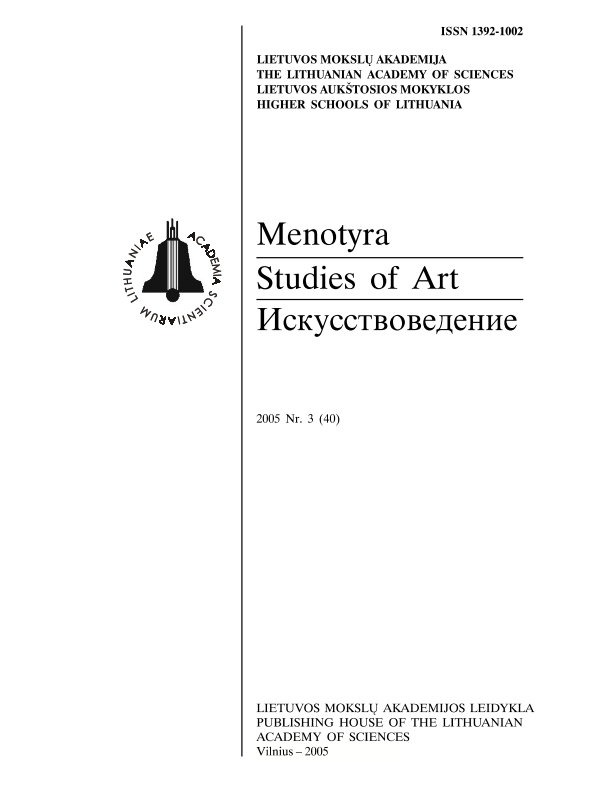Tema, gyvenimas, žmogus - kūrybiškosios socrealizmo plėtros gairės
Theme, life, man - guidelines for a creative development of socialist realism
Author(s): Erika GrigoravičienėSubject(s): Cultural history, Visual Arts, History of Communism, Sociology of Art
Published by: Lietuvos mokslų akademijos leidykla
Summary/Abstract: The article discusses the theoretical principles of Lithuanian official, conformist painting from the late 1950s through the early 1970s, or the creative phase of socialist realism. This historical study aims at establishing what was required of the artist by the Soviet authorities, how the Communist Party defined the ideological and aesthetic norms of the "mainstream of fine arts", and how it formulated the tasks and estimation criteria of painting. Analysis of the phenomena of non-conformist, underground creative work or the dissident artistic movement would be pointless without studying the distinctiveness of the Soviet official artistic life and the mechanisms employed by the Communist Party to control and discipline artistic production, as it is essential to know what artists were opposed to.The main components of the 'painting policy' of the period under discussion, i.e. the issues most frequently addressed during the congresses and board meetings of the Artists' Union and official cultural press, were 'thematic figure painting', 'bringing art closer to life' and the question of 'the new man'. Drawing on numerous archival sources and the press of the period, the article reveals fundamental inconsistencies in the (quasi-)theory of official painting, its demagogical nature, as well as shifts in theoretical attitudes, which were conditioned by changes in the work of reputable masters of socialist realism.The creative phase of socialist realism started with the first Congress of Soviet Artists in 1957, where socialist realism was reformed and established anew, and lasted into the early 1970s, when Lithuanian fine arts gradually lost the features of 'totalitarian art' (Igor Golomshtok). The volume of artistic production of the period, its specific qualities as well as significant changes in the views of artists and critics may be regarded as a result of the adaptation to 'the artistic mainstream'.It seems that the party did not succeed in achieving its declared aims, as the artists solved the tasks raised to them too 'creatively' and eventually started ignoring them. But it is likely that its secret, unpublicized aim was to prevent the spread of Western radical neo-avantgardist movements in Lithuania. Following the period of physical repression, the Communist Party could only forecast that artists would resist the imposed norms. The imposition of the thematic picture should have for long deterred Lithuanian painters from any conceptuality, articulated ideas, elaborate narratives and critical insights. The requirement 'to move with life' should have safeguarded both from 'fashionable trends' and blurring the distinction between radical art and life, which was characteristic of avantgarde. The demand of civil consciousness and attention to a human being could only stimulate social nihilism and mistrust in any forms of social activity. The official prohibition of abstract painting encouraged artists' desire to seek individuality in the means of expression and thus diverted artistic experiments into an easily controlled and not so sophisticated area.
Journal: Menotyra
- Issue Year: 2005
- Issue No: 3(40)
- Page Range: 28-41
- Page Count: 14
- Language: Lithuanian

